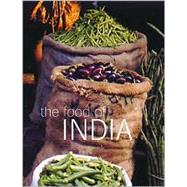
| The Food of India | |
| Recipes | |
| Tiffin | |
| Fish and Seafood | |
| Poultry and Meat | |
| Vegetables | |
| Pulses | |
| Rice and Grains | |
| Breads | |
| Accompaniments | |
| Sweets and Drinks | |
| Basics | |
| Glossary of Indian Food and Cooking | |
| Index | |
| Food Journeys In India | |
| Street Food- Chaat -- a walk along Chowpatty Beach | |
| Seafood- From the backwaters of Kerala to bustling Mumbai (Bombay) | |
| Spices- Aromatic ingredients from the spice coast of India | |
| Breads- Roti -- from tava to tandoor | |
| Sweets- Rossogollas, the foundation of a sweet empire | |
| Tea- Making tea in the gardens of Assam and the Nilgirs | |
| Table of Contents provided by Publisher. All Rights Reserved. |
The New copy of this book will include any supplemental materials advertised. Please check the title of the book to determine if it should include any access cards, study guides, lab manuals, CDs, etc.
The Used, Rental and eBook copies of this book are not guaranteed to include any supplemental materials. Typically, only the book itself is included. This is true even if the title states it includes any access cards, study guides, lab manuals, CDs, etc.